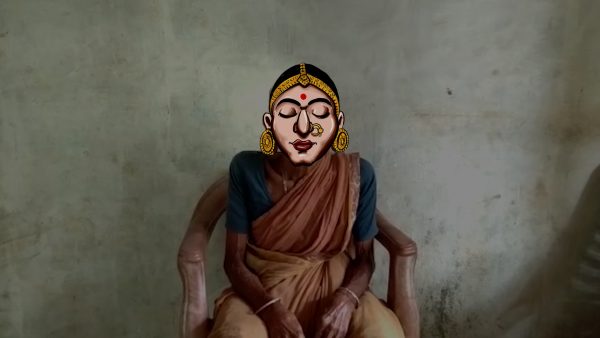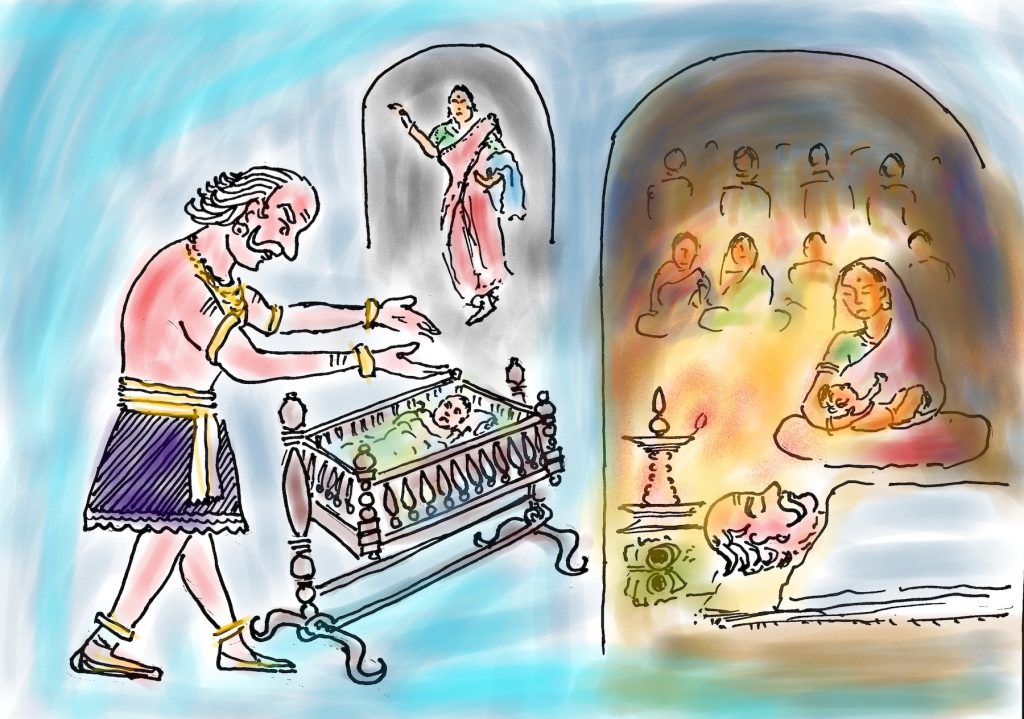The Covid-19 lockdown has triggered different responses from different people. Filmmakers like everyone else, too, have been left with no option but to remain confined to their homes. When the lockdown started on the 24th of March, it triggered a chain reaction by panic stricken migrant workers, who began to return to their home state, many of them walking thousands of kilometres; there was no way one could not have reacted to the resultant agony. An old song, Kahin Door Jab Din Dhal Jaye, from the Hindi film Anand came in handy, which I then used along with material found from social networking sites – still photographs and low resolution videos – to structure it all into a four-minute short film called Covid Anand.
Selfies With Siri, in a sense, is an extension of this process. Could a film be ‘created’ by using soundtracks and visuals that could be generated from the confines of our homes during the lock down period? Actors could record themselves on their mobiles or animators could sit on their workstations to create films. However, I am neither. But of late, I have been having close interactions with cinematographer Manoj Mundayat, whose side hobby is to draw cartoons. With no shooting or any other plan in place, he nevertheless agreed to make six illustrations for me.
And the subject? I looked at the myth of Siri, a benevolent spirit widely popular in the Tulu speaking area of Coastal Karnataka. Her story is sung orally in a form called as ‘Paddana’, mainly by women working in the fields in a melodious, repetitive and matter-of-fact tone. The plot of this epic spans three generations in time; its length is just a wee bit smaller than Homer’s Iliad. This Paddana is also sung in designated temples where families pay a visit once a year to have a ‘dialogue’ with Siri, her son and other family members on the domestic issues that they are facing. This lasts through the night.
In 1997, Hampi University, under the supervision of Dr Chandrashekara Kambara, had published a book edited by Dr Amrut Someshwar that had sixteen Paddanas involving as many benevolent spirits. Siri, being one among them, was documented by Someshwar as sung by the late Rama Manjeswhar. I decided to restrict the story to the first part of the epic based on this rendition. Here we see Siri is born magically out of the areca flower, is married off to a womanizing husband from whom she walks away despite being pregnant. When her grandfather dies, the elders decide that his palace be taken by her husband. Siri burns the palace in anger as an act of revolt against patriarchy. This portion of the epic was edited down to about 225 lines.

Surendra Kumar Marnad, my associate during my earlier Tulu film, Suddha: The Cleansing Rites, managed to find someone who agreed to sing the song in the manner it is supposed to be sung. Shailaja Shetty recorded the 225 lines part by part on her mobile at her home. But half way through, tragically, her mother passed away. It is to her immense credit that she still found the necessary strength to complete the entire recording despite her enormous loss. Since the recordings were done in different periods of time, the pace, rhythm and tone of the singing varied. Bangalore based filmmaker, Shrikant Prabhu, my colleague from FTII, stepped in and told me that he would design a background score instead of merely giving a conventional rhythmic accompaniment that usually supplements the voice.
As sound designer Santosh Kumar began remixing the tracks in his house, the editing commenced in mine. I started moving into and over the minimalistic illustrations that Manoj had provided. In fact, I would say I hovered around them – a device I had picked up in another short movie that I had made on the rise of the right wing in India called India Now!!!. This was done using African-American singer Lena Horne’s track on racism, Now, in the United States during the 1960s. The then banned track was smuggled to Cuba where Santiago Alvarez used it to make the classic short movie on oppression also called Now (1964). Santiago’s camera, too, flitted radically all over the still photographs that were extensively used in the film.
Since the story of Siri is essentially about womanhood, I decided that I would have many women shoot themselves on their mobiles. They would look into the camera blankly without any emotions whatsoever. Here I must confess that this was a reaction on my part to all those horribly overacted selfie videos pouring in on social networks in the name of ‘enacting’ dialogues from the stage. I got well-known cartoonist Satish Acharya to brush a mask of Siri for which we referred to an old medieval wooden statue of her. This mask then moved over the faces of these women, who were of all ages, and exited the frame in the exact manner it entered.
The film got complete when I added another visual layer. That of live footage of a major river in Coastal Karnataka called Netravati. I used clips of the river as it moves from the hills, through the forests, onto the plains and finally, into the sea. A few years back, I had started making a documentary on this river, but could not raise funds to see the film through. That existing footage came in handy now and how!
The story of Siri is that of an ordinary woman transcending herself to become a benevolent spirit or ‘Bootha’. Tulu society believes that she protects the vulnerable womenfolk amongst them. In Selfies With Siri, I stopped the story much before she becomes a divine spirit. I ended it at a time when she is still in her human form but is as powerful and self-made as she would be in her divinity.
That then is my tryst with Siri, on whom I wanted to make a film for over twenty years now but somehow could not. A few Tulu producers had initially agreed to finance the project but had subsequently backed off, fearing that the spirit of Siri would be displeased if something ‘inappropriate’ were included in the film.
To think it took a Covid-19 lockdown for her to finally take this form…
The short film, which is of about twenty-minutes duration, can be viewed here.


